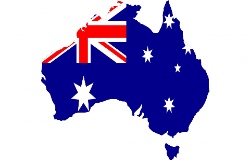ACEH'S LEADING DAILY DEALS WITH TRAGEDY AFTERMATH
ACEH'S LEADING DAILY DEALS WITH TRAGEDY AFTERMATH
BANDA ACEH (Jakarta Post Online/Pacific Media Watch): It may not be easy to revive the spirits of the Acehnese just three weeks after the horrific 26 December tsunami, but for Aceh's leading daily newspaper Serambi Indonesia, no challenge is insurmountable.
After five days off the newsstands, the daily was back on 1 January, albeit initially at only half of its normal size yet with a mission to keep the Acehnese informed and lift their spirits through reporting the solace of victims and relief efforts.
"There were many rumours
buzzing, many even caused anxiety, like a second tsunami or
an outbreak of disease. We felt like we had to immediately
be available again for the Acehnese as we were the only
daily here and we had to keep the people calm as none of the
rumours were facts," the daily's
editorial secretary,
Nurdinsyam, told The Jakarta Post on Tuesday (18
January).
The daily distributed the paper for free during
the first seven days to
people in areas that could be
reached at that time, including refugee camps
and
humanitarian aid posts.
The important role that it plays has not gone unnoticed.
The United Nations High
Commissioner for Refugees is now planning to
distribute
Serambi Indonesia to the hundreds of refugee shelters.
"I
acted as a newspaper delivery boy," Mans Nyberg, a spokesman
for the UN
agency said when delivering a bunch of
newspapers and tents for a camp in
Lhok Nga to the west
of Banda Aceh.
Signs that Serambi Indonesia is now firmly
back on its feet came on Tuesday
when it started
publishing in 12 pages, and in colour.
After the week-long
free distribution, the daily started charging consumers
Rp 1,500 (16 US cents), lower than the initial Rp 2,000.
The original price
will be re-applied next
month.
Currently, the daily prints around 16,000 copies
each day, far below 25,000
before the tsunami disaster,
but more than triple what it printed on 1 January.
While
most of its content is about the disaster it has dedicated a
lot of
space for positive stories about relief efforts
and outpourings of aid.
The daily also provides a few
pages for survivors' advertisements seeking
information
on the whereabouts of their missing relatives, which have
been
printed for free during the first week after the
disaster.
"We even changed the title of one special page
from Aceh Cries to Aceh
Rises to show that we're hoping
for the better with all of the positive
responses we've
been getting so far," said Nurdinsyam.
However, things are
not that smooth though for the daily who will celebrate
its 16th anniversary next month.
Working on the
newspaper from a nine by six metre rented shop house,
journalists have to take turns when using computers to
write news stories
since most of the computers and
production facilities were destroyed after
the tidal
waves swept through their old headquarters located on the
coast.
The daily's original two-story office is now filled
with mud and dirt,
while papers and documents are
scattered all over the second floor where
the editorial
and library rooms were once located. Unsurprisingly, the
daily's management has decided to find a new location at
the heart of the city.
The paper lost 51 of its 193 staff in the disaster.
"We expect to move to a new place in the
next three or four months. Until
then, we'll just stay
here and do our best with what's available,"
Nurdinsyam
said.
In spite of making progress, the newspaper may be
forced to lay off workers
in the coming weeks in order
to be able to stay afloat financially.
On top of the huge
losses caused by the disaster, the newspaper had lost a
further Rp 12 billion since its return, and the decision
to go colour was
bound to add to its costs, and thus its
losses too.
If Serambi Indonesia had a monopoly before the
disaster, that privilege is
now gone.
"Basically, it's
about competition. A new daily called Rakyat Aceh has just
emerged, so we've got to kind of beautify ourselves to
win readers over,"
he said.


 Greenpeace: 'Desperate And Deceitful'- Deep Sea Mining Frontrunner Turns Its Back On Pacific Nations
Greenpeace: 'Desperate And Deceitful'- Deep Sea Mining Frontrunner Turns Its Back On Pacific Nations 350.org: Australia Announces Election Dates, Pacific Islanders Rally To Vote For Climate
350.org: Australia Announces Election Dates, Pacific Islanders Rally To Vote For Climate UNICEF Aotearoa NZ: Global Aid Funding Cuts - 14 Million Children At Increased Risk Of Severe Malnutrition And Death
UNICEF Aotearoa NZ: Global Aid Funding Cuts - 14 Million Children At Increased Risk Of Severe Malnutrition And Death Oxfam Aotearoa: Humanitarian Operations In Gaza Severely Hampered; Famine Risks Increasing
Oxfam Aotearoa: Humanitarian Operations In Gaza Severely Hampered; Famine Risks Increasing UN News: Migrant Deaths In Asia Hit Record High In 2024, UN Data Reveals
UN News: Migrant Deaths In Asia Hit Record High In 2024, UN Data Reveals Sonali Kolhatkar, IMI: First, They Came For The Venezuelans
Sonali Kolhatkar, IMI: First, They Came For The Venezuelans